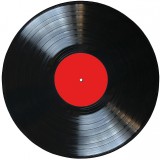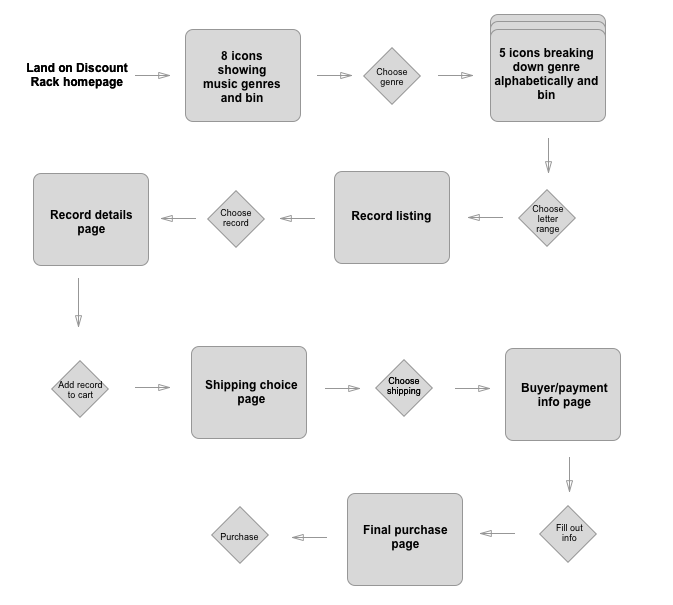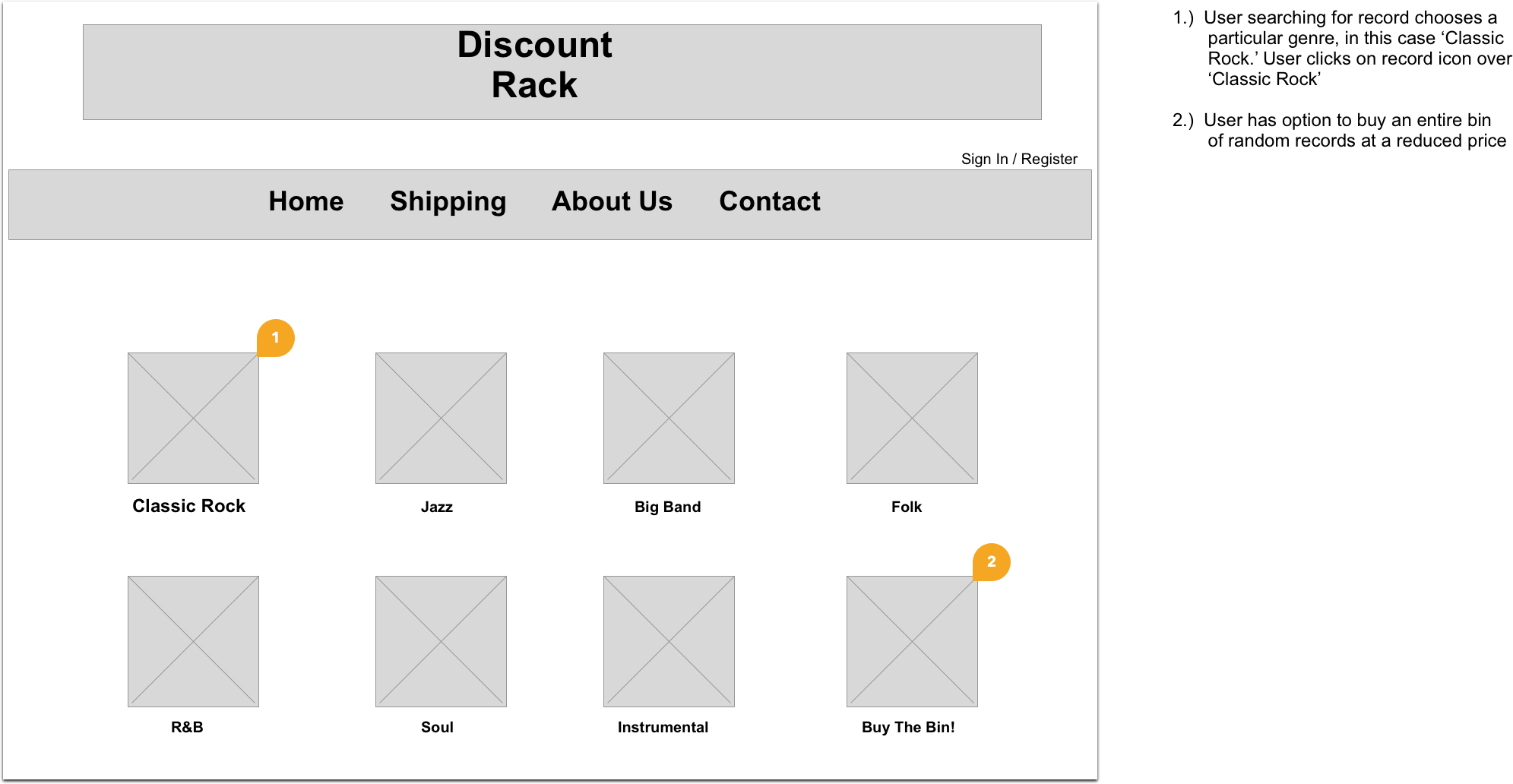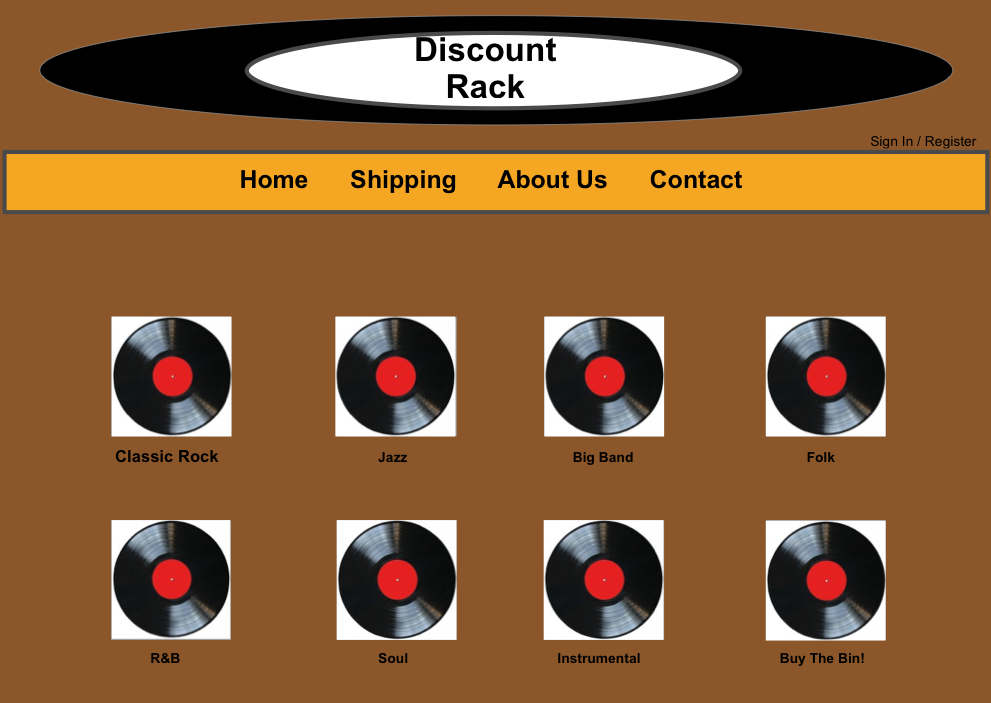
DiscountRack.com
OBJECTIVE: There currently does not exist a simple, end-to-end online resource for casual, occasional buyers of used vinyl records. I created a design to approximate the experience of browsing through vinyl records at a brick and mortar store and a worry-free shipping option for online purchases.

Project: DiscountRack.com
Role: End-to-end product design
Time Frame: 5 days
Competition
The current leading site for buying records online is Discogs.com which, as can be seen from the main webpage below, does not offer an enjoyable user experience. Findings from empathy maps and user journeys revealed that most of the pain points centered around page clutter and an overload of information.

Improvement Journey
I began with sketches of a simpler, much less-cluttered interface design. The focus was on giving the user an immediately familiar experience with music genres, which they would see upon entering a physical record store. As the flow continued to record choice, shopping cart and checkout, the emphasis continued to be on minimal clutter and simplicity of form.
User Flows
Next on the journey was fleshing out user flows. The primary user flow below maps out the most basic path a DiscountRack.com user would follow to purchase a record.

Sitemap
The user flows directly informed and led to a basic sitemap. Again, the prevailing goal was to emulate the experience of visiting a used music store and those elements of the site take up the majority of the sitemap. Further iterations of the design would need to include mapping out elements deriving from different filtering possibilities besides genre (i.e. name, album title, etc).

Final Steps
The final steps involved producing a set of hi-fidelity annotated wireframes to detail the basic site functionality. The goal remained simplicity of function and lack of clutter on each page.




Destination
In keeping with the overall design goal, the final mockup for the site was a simple, utilitarian design which captured the overall feel of the wireframes and even the original sketches. The majority of iterations were made on subsequent pages and involved only minor alternative placement of page elements.





